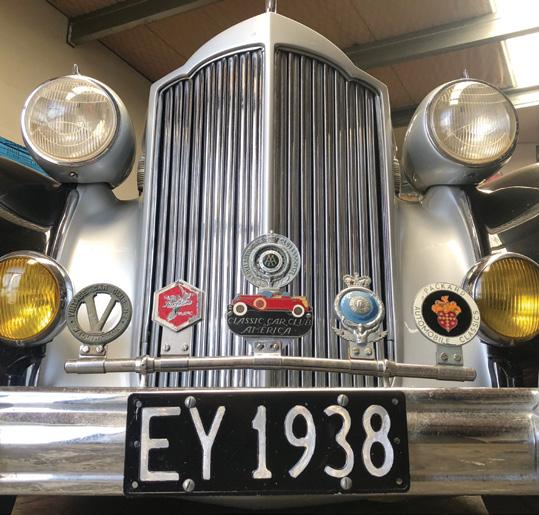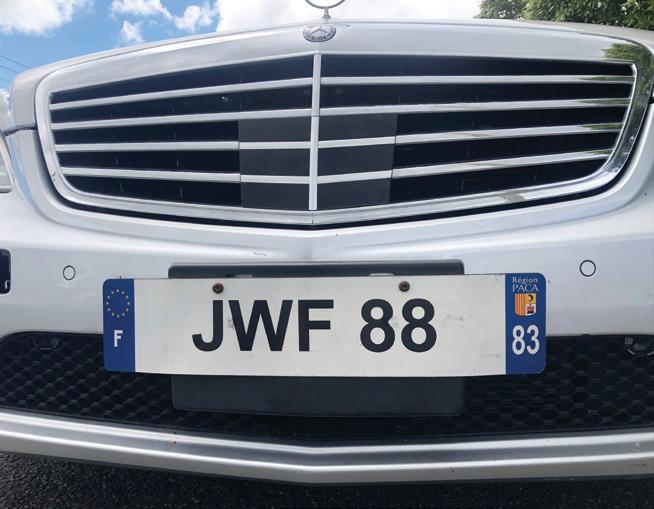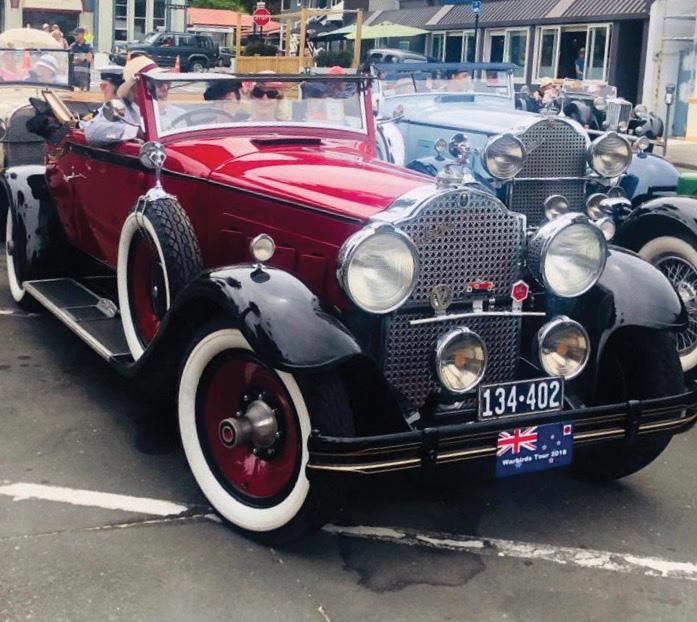
3 minute read
Fun with Number Plates
WORDS AND PHOTOS MICHAEL TAYLOR
Until 1988 the only fun you could have with New Zealand number plates was to hang them on the wall of your garage.
As many readers will know, New Zealand issued national plates for the first time in 1925, replaced annually until 1941, and then every five years (1941, 46, 51, 56 and 61) until the decision was made to issue permanent number plates from 1964. These were the silver on black plates (two letters and four numbers for cars, four or five numbers for motorcycles).
Enter the first personalised plates, well sort of. In the mid to late ‘60s you could reserve the next set of numbers that suited you, and for the cost of the plates (10 shillings), you could get the next set of the date of the year of your car that came up. I have EY 1922 and EY 1938 for the two Packards I’ve owned since the ‘60s. In those days rego went 1 July – 30 June for everyone, so to keep your rego alive you had to pay for the month of June each year. (No WOF was required).
Sometime in the late ‘60s I started collecting old New Zealand (and a few other) number plates. They are becoming harder to get nowadays. However, even within the last few years I have picked up paired plates from the ‘20s and ‘30s in junk and antique shops around the countryside.
In 1988 the current black on white reflectorised plates were issued. At this time someone realised there was money to be made from personalised plates. There was and still is.
My first number plate venture in the modern (post 1988) period was in 1996 when I imported a 1990 Mercedes 560 SEL (found for me by a car dealer friend who was buying Range Rovers in England). It came from the Isle of Man, rego 560 CMN. (The CMN was C prefix, MN for Isle of Man). I bought 56O CMN (Note that the zero became an O, as the New Zealand zero has a slash through it). I still have it.
For almost 25 years we had a small share in a house in Provence. One day about 2008, in the town market, there was a caravan making number plates. I got one for what was then my daily driver, CSH 208. A few years later, also in Provence, I found a shop which produced my current daily-driver’s Provencal plates, JWF 88, with Provence Cote d’Azur regional emblems.
Going back a few years to the late 2000s, I realised that I had a set of 1938 New Zealand plates. Those now grace my 1938 English bodied Hudson (149 425).
My next restoration (2016) was my 1930 Packard Victoria, largely made from spare parts, and created rather than restored. I had a set of 1930 New Zealand plates, and these are now on the Packard (134 4O2).1 (Note that again the zero is now an O.)
I recently read the Beaded Wheels article about either finishing or passing on projects you can’t finish before you shuffle off this mortal coil. I felt quite smug in that I have only one restoration project left and hope to finish it soon. It is a 1922 Fleetwood bodied Packard Twin Six (V12) that I imported about 13 years ago. I have some 1925 plates to put on it.
With a bit of imagination you can have fun with number plates, not only your old or historic cars. If you are lucky you can extend the fun to your modern too. And all the spare ones can go on the wall.
Happy Number Plating.
In Britain, original number plates are now greatly valued on historic (and other) cars, this is because every car has always had its rego number from cradle to the grave. A car first registered in 1901 still has its original number (so long as it’s had continuous registration).
I would imagine that this has only become important since the historic vehicle movement got under way after WWII.
There is now a very active trade in plates, historic and personalised, in Britain.
1 Note that if you want to put old New Zealand plates on your historic vehicle, current New Zealand plates have a slash through the Zero: You Must Get an “O”, not a zero (0).










